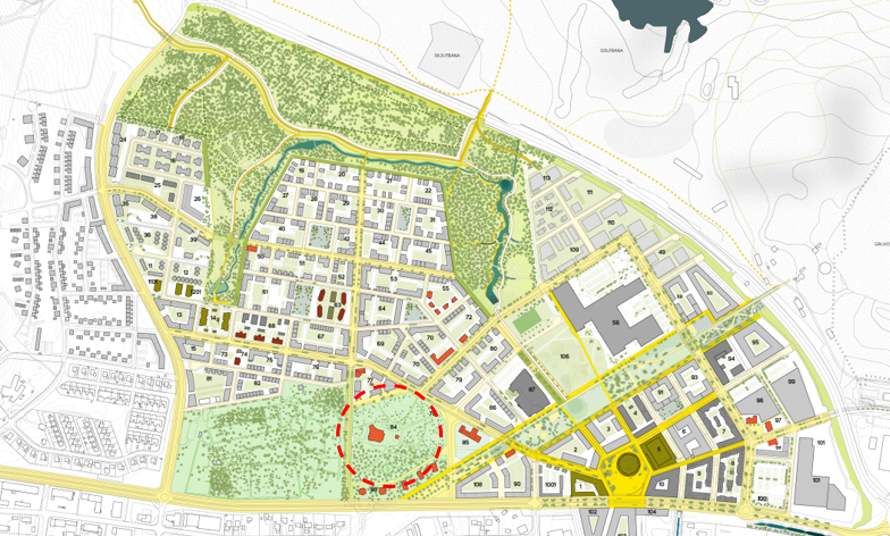Kiruna
Move
Kiruna Church is perhaps the city's most distinctive building. The church was completed in 1912 and was a gift from LKAB to the congregation. Within a few years, it will be moved to a new location.
StatusOngoing
Tidsplan 2017 - 2027

Time for the physical move: 2025
Church construction: 1909 – 1912
Kiruna Church is special in many ways. It is a religious cultural heritage site and is protected by the Swedish Cultural Environment Act (kulturmiljölagen), so the question was never if it would be moved, but rather how.

The bell tower was built in 1907, and the church itself was constructed between 1909 and 1912 as a gift from LKAB to the congregation. The architect was Gustav Wickman, who designed several different proposals. For the bell tower, 18th-century clock towers from Jämtland and Sámi timber huts served as inspiration. Several artists collaborated on the church bells.
As a religious cultural heritage site, Kiruna Church is subject to special laws, regulations, and requirements during both the planning and execution of the move. The application for an approved relocation plan is submitted through the Swedish County Administrative Board (Länsstyrelsen).
The move requires extensive preparatory work, including planning, investigation, and preparation, before the physical relocation can take place. This groundwork began in 2017 as a feasibility study. The preliminary planning phase was completed in early 2023, transitioning to the project planning phase, which was completed in 2024. Simultaneously, the construction of the relocation route has begun.
This means that the type of relocation method has been determined, and the necessary permits for moving the church and its furnishings are being secured. The handling of Hjalmar Lundbohm’s grave is also under investigation.
At the beginning of 2025, the so-called construction phase began for the move in its entirety, but even before that, work on the relocation route, within the new site and preparatory work at the church had begun.
Outlines for the move of Kiruna Church:




LKAB maintains ongoing dialogue with Kiruna Parish, the County Administrative Board, and Kiruna Municipality regarding the relocation of Kiruna Church. This involves not only the physical move but also how the church’s cultural environment, along with the memories, sorrows, and joys associated with the site, can be moved carefully and thoughtfully.
The physical relocation, including the transport of Kiruna Church and its bell tower, is planned for autumn 2025. The approved relocation route passes via Gruvvägen, Hjalmar Lundbohmsvägen, Silfwerbrandsgatan, Lombololeden, Cisternvägen, Lastvägen, and across Malmvägen to the new site next to the cemetery. The relocation of the church, along with its bell tower, is extensive in many ways: the building is “the House of the Lord,” a religious cultural heritage site protected by the Cultural Environment Act, and it has significant size and weight.

This relocation will differ from other LKAB relocation projects since the church and all its items are extensively protected by the Cultural Environment Act as well as the Planning and Building Act. In addition, Hjalmar Lundbohm’s grave is protected by the Burial Act, and the church’s activities are governed by Church Ordinance. Furthermore, the church is not just any building—it is tied to Christian rituals, faith, and spirituality.
Watch the video about the church’s relocation route below (some text is in Swedish):
Kiruna Church will be moved to a site next to the cemetery, close to Kiruna’s new center. A new site has been established there.

Below is an overview sketch of the design concept that will guide the work once the church has been relocated to its new site.

The church’s architecture is inspired by Norwegian stave churches. With its falun-red shingle-covered facades, dark tarred interior, materials, and inspiration, it has a national romantic character and is a clear expression of its time.

The church park is part of the environment surrounding the church, where, among other things, LKAB’s first manager and Kiruna’s founder, Hjalmar Lundbohm, is buried.